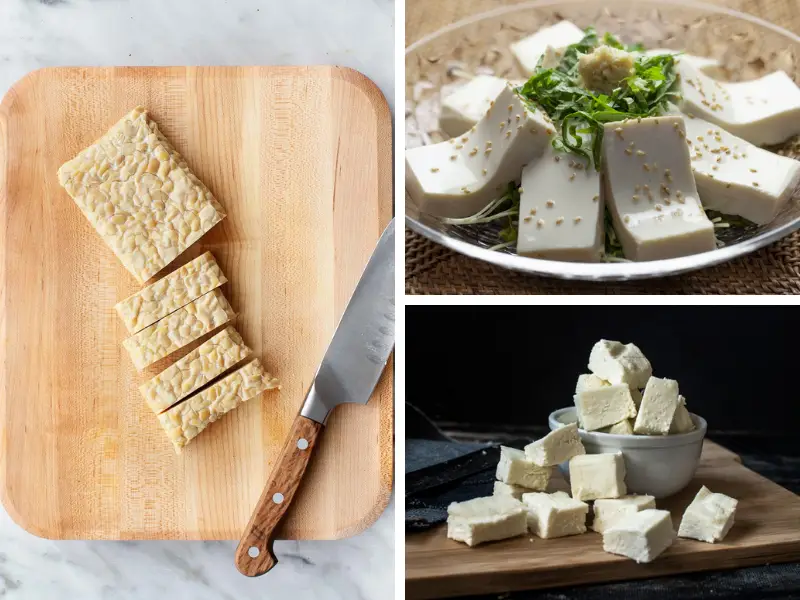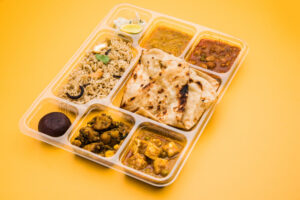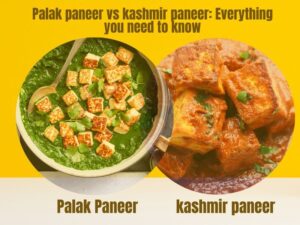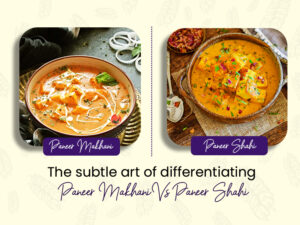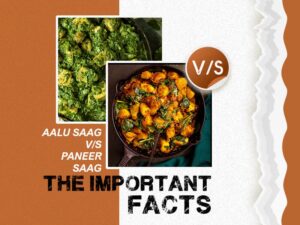Tofu, paneer, and tempeh all have a similar appearance and taste. Many people may be puzzled about how they differ from one another and how to recognize them separately. We’ll explain the differences and similarities between tempeh vs tofu vs paneer in this article.
The Similarities Between Tempeh vs Tofu vs Paneer
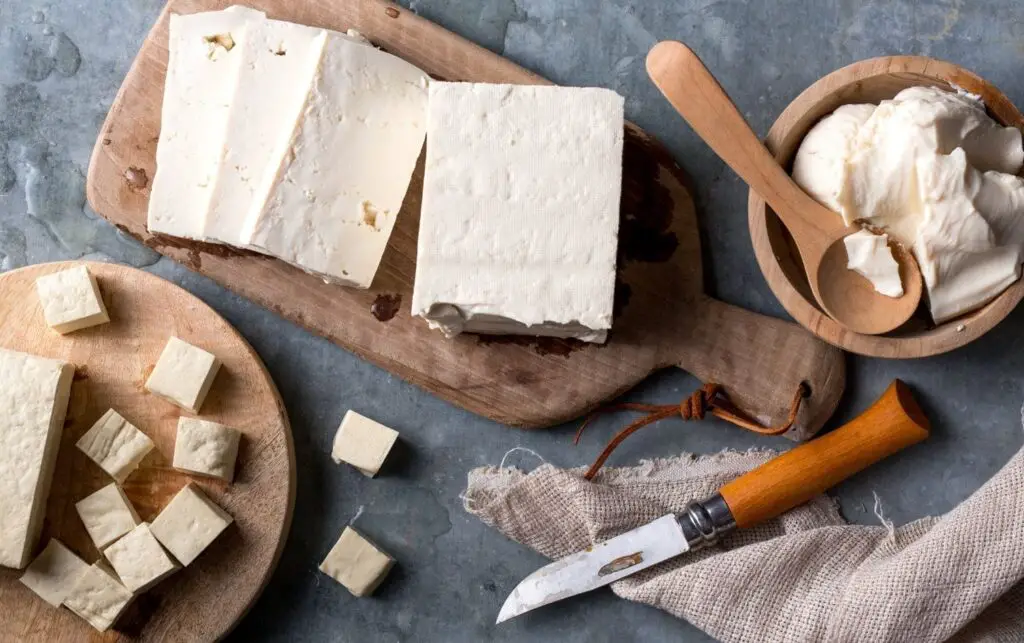
Paneer and tofu are both white blocks of cheese that can be used in a variety of Asian meals. Curdling and pressing are used in the manufacture of both foods. Each has a mild flavor on its own, but absorbs the tastes of the marinades it is served with.
Furthermore, these meals are high in protein and calcium, making them ideal for vegetarians. Paneer and tofu, for example, are complete protein sources, meaning they include all of the amino acids your body requires.
Protein intake is critical for maintaining a healthy weight and muscle mass. Paneer and tofu might help you achieve your protein requirements.
When it comes to health advantages, though, the two foods don’t have many similarities.
On the other hand, the health advantages of tofu and tempeh are similar.
Isoflavone-rich
Tempeh and tofu are high in isoflavones, which are phytoestrogens.
Isoflavones are plant compounds that have the same chemical structure as estrogen and have similar actions. Estrogen is a hormone that helps with sexual and reproductive development.
Many of the health benefits of tofu and tempeh have been related to their isoflavone content, including a lower risk of some malignancies and better heart health.
Depending on the soybeans used to make it, tofu has 17–21 mg of isoflavones per 3-ounce (85-gram) portion, while tempeh has 10–38 mg in the same serving size.
Lowers the chance of heart disease.
Due to its effects on cholesterol and triglycerides, increasing soy consumption has been linked to a lower risk of heart disease in studies.
In one rat study, nutrient-rich tempeh was found to lower both triglyceride and cholesterol levels.
Tofu seems to have comparable results. Tofu and soy protein, for example, were shown to reduce triglyceride and cholesterol levels in rats in a study.
But What are the Benefits of Paneer?
Paneer is the most versatile food item, and it's beneficial in almost every way it's cooked. Here are some of the benefits of having raw paneer in breakfast.#milk #paneer #paras #parasmilkk #benefits #raw pic.twitter.com/L56OGvAQjX
— Paras Milkk (@MilkkParas) February 17, 2021
- Paneer helps with muscle development.
- Paneer strengthens teeth and bones.
Paneer is high in calcium, which aids in the development of strong teeth and muscles. Gum deterioration can be prevented with paneer. The lactose content in paneer is low, which helps to prevent tooth decay.
- With paneer, the body’s metabolism is improved.
Paneer gives the body quick energy and aids in the release of much-needed calories. The body’s insulin resistance is managed, and it also aids in the improvement of metabolism. The body will not store excess fat and digestion will improve as a result.
Paneer contains a high amount of linoleic acid, which aids in the burning of body fat. The fat deposits in the arteries cause heart attacks and strokes. Paneer’s capacity to burn fat can help to minimize fat accumulation in the arteries, which can cause to heart attacks. This acid is abundant in beef, lamb, and veal, which is why paneer is so beneficial to devout vegetarians.
The Differences Between Tempeh vs Tofu vs Paneer
Appearance
Since these three goods are so similar, it’s easy to get them mixed up. Paneer is a type of cheese that is white, soft, and moist to the touch. Tofu, on the other hand, is slightly browner, wetter, and more difficult to handle than paneer. Tempeh has a brown tint and is dry to the touch.
Paneer is a marble-white cheese with a solid, cohesive, and spongy body, a close-knit texture, and a sweetish-acidic-nutty flavor. It is similar to halloumi cheese. Click here halloumi vs paneer to know the differences between the two.
Tofu has the appearance of a block of white sponges. While tofu can be carved into any shape, the little blocks are the most common. Tofu has a bland flavor before it is cooked or seasoned.
Fresh tempeh resembles crushed beans that have been shaped into a beige and white cake. Tempeh has a chewy, solid texture and a nutty, earthy flavor.
How They Are Made
Paneer is a fresh, unaged cheese prepared from curdled cow’s or buffalo’s milk with lime juice or similar acid. Paneer, commonly known as Indian cottage cheese, is a type of cheese that is thought to have originated in India. The process of making paneer is quite similar to that of Queso fresco. Paneer vs queso fresco: both are acid-set cheeses.
Curdled soy milk, an iron-rich liquid produced from crushed, cooked soybeans, is used to make tofu. The curds are then drained and formed into a block, similar to the way cheese is made. The stiffness of the tofu is determined by how much whey is drained, although it is normally custard-like and pale white in color.
Tempeh is typically made from soybeans, although it can also include other beans, entire grains, and flavorings. Soybeans are boiled and fermented before being compressed into a brick-like cake to form tempeh.
Flavour And Texture
The texture of the paneer varies depending on how long it is pounded, from soft and spongy to somewhat solid. It also doesn’t melt during the cooking process. If you can’t find paneer at your local grocery store, you can use mozzarella instead! Read paneer vs mozzarella to know their similarities and differences.
Tofu has a bland flavor before it is cooked or seasoned. This meal, on the other hand, is a fantastic taste absorber, making it a favorite among cooks. Tofu can be flavorful, sweet, crunchy, or soft, depending on how it’s prepared.
Tempeh has a thick texture and a mushroomy, slightly nutty flavor. Because tempeh is a fermented protein, it is high in umami, which gives it a meaty flavor. Because it is bland and lacks salt, it is frequently marinated in soy sauce to enhance the meaty flavor.
Nutrition Facts
Paneer has about 14 grams of protein per 100 grams. Cottage cheese prepared at home is the best source of protein for small children and older family members because it is available in its purest form, with no preservatives or chemicals added. A cup of paneer has 658 calories in it. Carbohydrates provide for 146 calories, protein for 119 calories, and the remaining calories (393 calories) come from fat. A cup of paneer offers around 53% of the entire daily calorie needs of a 2,000-calorie adult diet.
One 1/2 cup of raw, firm tofu has 10.1 grams of protein, making it an excellent vegetarian protein source. Tofu calories vary depending on the variety, but a half-cup meal of firm tofu has around 181 calories. This equates to around 144 calories per 100 grams. A 100-gram portion of silken tofu, on the other hand, is likely to have around 55 calories.
The high protein content of tempeh is one of its most enticing features. The same 1 cup of chopped tempeh contains a staggering 34 grams of protein to keep you full. 100 grams of tempeh contains 193 calories.
Tempeh vs Tofu vs Paneer: Which Is The Healthiest?

Tofu provides more protein than paneer and is considered a healthier alternative. So, what about tempeh? Is tofu healthier than tempeh?
Soybeans are the same source for both tofu and tempeh. Although they are quite similar, the fermentation process allows tempeh to take the lead in terms of nutritional value. When compared to tofu, tempeh offers more protein, dietary fiber, and vitamins. Tempeh is also considered healthier because it is less processed.
Want to read a similar article? Check this out: panela vs paneer
